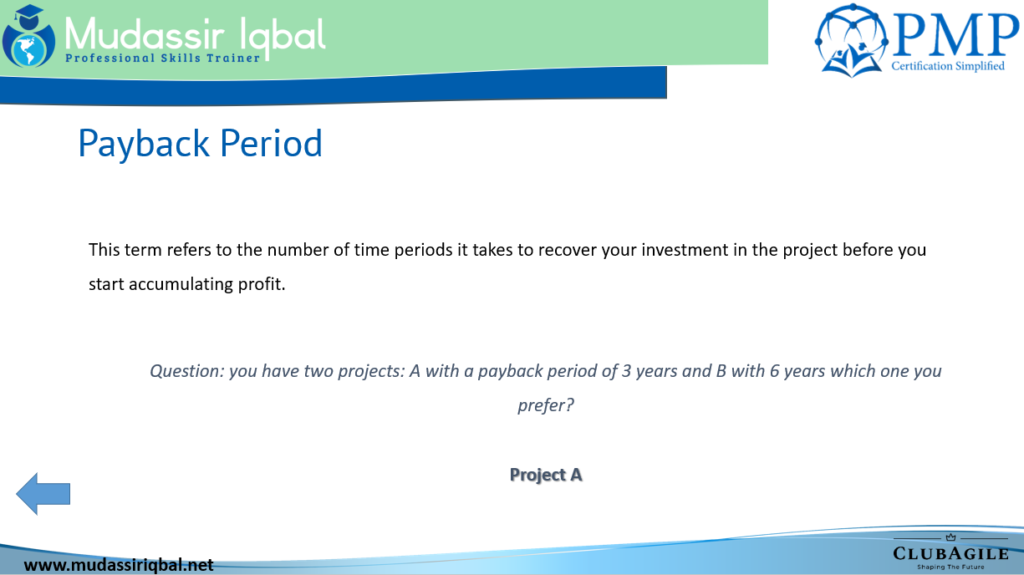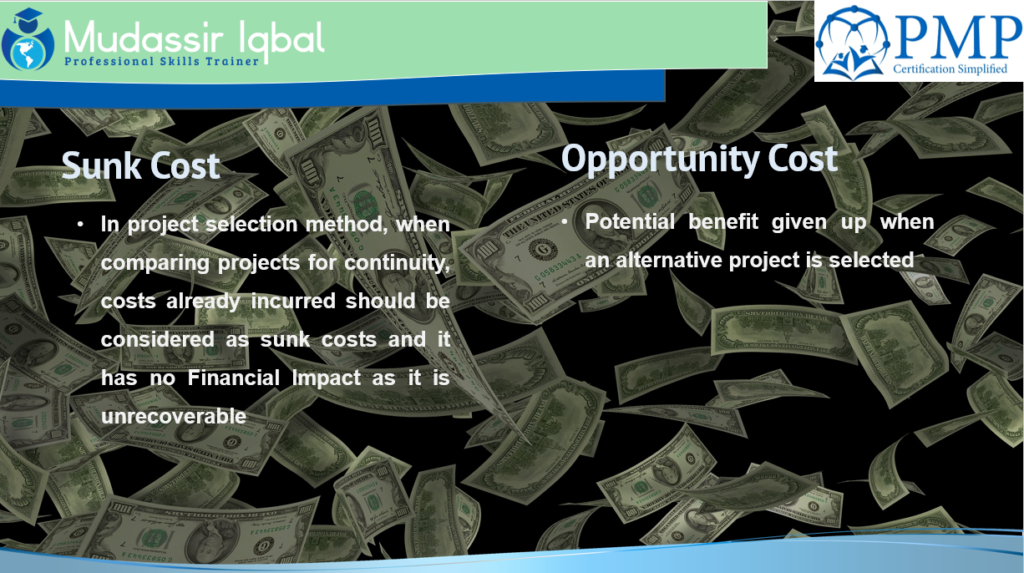The payback period is the length of time required to recover the cost of an investment. Sunk costs are costs that have already been incurred and cannot be recovered. Opportunity cost is the cost of forgoing one option for another
Payback Period:
The payback period is a financial metric that calculates the time it takes for a business to recover its initial investment in a project. This metric evaluates the profitability and risk associated with a particular investment opportunity. Essentially, it helps determine the length of time it will take for a company to break even and begin making a profit from a given investment.
Generally, a shorter payback period is considered more favourable because it means that the investment will be profitable sooner.

Sunk Cost:
A sunk cost is a cost that has already been incurred and cannot be recovered. This cost is irrelevant to future decisions because it is a cost that has already been spent and cannot be changed. Sunk costs are often used in economic decision-making to illustrate the concept of opportunity cost.
Sunk costs are, by definition, those which cannot be recovered by any means.
Some previously incurred costs can be sold on for their purchase price a
nd therefore are not considered sunk.
For example, if a business has already spent $1 million on a project that is not going as planned, it should not continue investing in the project just because of the sunk cost. Instead, it should consider the opportunity cost of continuing the project and decide whether it is worth continuing based on the expected future returns.
Some examples may include
- Advertising Cost
- Market Research Cost
- Installation Fees
- Development
- Additional Inventory

Opportunity Cost:
Opportunity cost is the cost of the next best alternative that is forgone in order to pursue a certain action or decision. It is the cost of the trade-off between two choices. For example, if a business decides to invest in a new project, the opportunity cost is the revenue that could have been generated from investing in a different project or opportunity. Opportunity cost is an important concept in decision-making because it helps to ensure that a business is making the best use of its resources and capital.
Opportunity cost is the forgone benefit that would have been derived
from an option not chosen.
Formula and Calculation of Opportunity Cost
Opportunity cost = return on best foregone option (FO) – return on chosen option (CO)
where:
FO=Return on best-forgone option
CO=Return on the chosen option
Further Readings
Opportunity Cost Formula, Calculation, and What It Can Tell You (investopedia.com)


2 thoughts to “Payback Period, Sunk Cost and Opportunity Cost”
Pingback: Make or Buy Decision - Mudassir Iqbal
Pingback: Make-or-Buy Analysis - Mudassir Iqbal